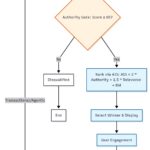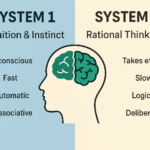For a long time, I didn’t feel I had much to contribute to SEO.
Coming from a journalism background – writing for organisations like the ABC, The Guardian, and NPR – I was trained to value depth, originality, and clarity. But when I first began exploring digital content strategy, SEO felt like a field dominated by pattern matching.

When content quality gets buried: The old SEO dilemma
Success often hinged on predictable templates, keyword repetition, and listicles – tactics that prioritised surface over substance.
That’s not to say SEOs weren’t highly intelligent practitioners – many developed elegant technical solutions to guide the algorithm in favouring one piece of content over another. But the differentiator was often backend structure and surface-level optimisation, rather than true depth, breadth, or originality of content.
As such, I didn’t feel my expertise belonged in this space. Too often, original, high-value content was buried beneath well-optimised, repurposed listicles and surface-level hot takes.
So I focused my energy elsewhere: working in strategic communications and media advising across international development and public health, and later studying behavioural economics and mechanism design.
A universal lesson: Structure precedes connection
Again and again, I saw the same pattern: it’s not enough for a message to intellectually and emotionally resonate with humans – it has to work with the architecture and incentives of the system it enters.
In international development, a message that doesn’t fit the funding or reporting logic gets ignored. In digital, content that isn’t structured for the search ecosystem gets buried, no matter how valuable it is.
It’s a fundamentally different challenge than writing an article or novel for a captive audience. When you publish online, your content enters an ecosystem awash with competing signals—where visibility is determined as much by machine interpretation as human interest.
And for content to succeed in that environment, it must first be recognised and prioritised by machines – then deliver clarity and value to real people.
Semantic signals over surface proxies: What AI really values
While many of the old SEO tactics persisted, a deeper shift was already underway. AI systems were becoming increasingly sophisticated, and more deeply embedded into the mechanics of search itself.
Google’s core goal hasn’t changed: deliver the most helpful answers, as quickly and seamlessly as possible, so users stay satisfied and keep coming back.
AI enables this by better matching user intent with meaningful responses. It can now detect nuance, originality, and depth – surfacing content that genuinely meets a user’s needs.
That’s why the rise of generative AI and large language models – like ChatGPT, Google Gemini, and Perplexity – isn’t just a technical upgrade. It marks a structural change in how search functions. Instead of static lists of links, users now engage in iterative, conversational queries that demand richer, more contextual answers.
Generative AI and the end of the blue link
Google’s AI Overviews is already reshaping how information is presented for many informational queries, surfacing synthesised responses directly on the results page.
With the recent launch of AI Mode, Google is accelerating this shift—pushing traditional blue links further into the background as it prioritises direct, machine-generated answers. Soon, agentic systems – AI tools that don’t just summarise, but actually complete tasks for users – will transform how visibility and action flow through the search experience.
In this new environment, AI systems are no longer ranking content based on simplistic proxies like keyword density or inbound link volume.
Instead, they assess semantic and relational signals – how entities, sources, and context interconnect across the broader information ecosystem.
It’s no longer just about being indexed and ranked. It’s about being interpreted and understood – logically, contextually, and authoritatively – by the system itself.
Probabilistic, not deterministic: The new dynamics of visibility
SEO, in its current upheaval, is finally rewarding skills and disciplines that have long been undervalued: depth, originality, structured thinking. It’s becoming more probabilistic, less deterministic. Less about gaming fixed rules, more about shaping information in ways that both humans and machines can interpret, trust, and use. For a fantastic technical breakdown of Google’s AI search technology, read How AI Mode Works by Mike King.
I believe there’s a rare window opening for businesses to build real, durable authority in the age of AI search – not by chasing hacks, but by investing in structured communication ecosystems that align with how AI systems now evaluate and surface expertise.
‘Dual-Intelligence Architecture’: Building for machine logic & human meaning
This shift demanded more than just new tactics; it required a new model. That’s why I developed Dual-Intelligence Architecture (DIA) – a content and website strategy engineered to serve both AI comprehension and human clarity.
I’ll be sharing early results shortly – including how one of our foundational pages has rapidly been recognised, understood, and surfaced for key target AI search queries, such as Google’s AI Overviews and other AI zero click searches.
But for now, I wanted to step back and share the context – the journey that led here, and why this turning point in SEO feels less like a disruption, and more like a long – overdue alignment between communication and system design.
Read the introduction to Dual-Intelligence Architecture (DIA) .

